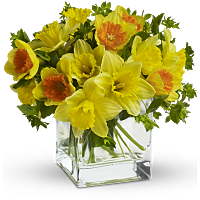best and worst plants for people with allergies
Flowers can seem like a death sentence for people who suffer from allergies. Luckily, these individuals no longer need to cringe when they receive a gorgeous bouquet of flowers. The key to being able to enjoy lovely blooms even with allergies, it is to pick ones with flowers that are best for people who suffer from the effects of allergies.
Let's face it, the symptoms that are synonymous with allergies can be quite annoying. From a runny nose and itchy eyes to sinus pressure, headaches and a sore throat, many with the problem may try everything in their power to avoid coming in contact with things they are allergic to. Unfortunately, flowers can be one of the most common allergy triggers around, though certain blooms have less or even no effect and these are the ones allergy sufferers should look for.

Top flowers for people with allergies
WebMD reports there are actually quite a variety of flowers out there that allergy sufferers can live in harmony with. Begonia, cactus, clematis, columbine, crocus, daffodil and geranium are some of the most allergy-friendly plants and flowers. Hosta, hydrangea, iris, lily, periwinkle, rose, tulip, zinnia and more are also known for being good choices.

Hydrangea
The hydrangea plant is not only beautiful and comes in a variety of colors, but it is also a great choice for allergy sufferers, AllergicLiving.com reports. Flower lovers will marvel at the gorgeous pink, blue, white and purple flower heads that are naturally found in the northern climates.

Hosta
Hostas are another popular choice for allergy sufferers and these blooms can range from chartreuse to gold. The smaller flowers inside are often a pale violet or white and the majority of hosta plants are unscented. This option may be perfect to store on your desk, as the plant requires minimal sunlight or water.

Lilies
The gorgeous lily family is another suitable choice for allergy sufferers as these stunning blossoms are pollen-free. Since allergens are typically found in a plant's pollen, not having the substance is a major plus. Asiatic lilies come in gorgeous pink, red, orange, and mixed colors, making it both hypo-allergenic and a sight for sore eyes. However, Oriental lilies such as Stargazer lilies are very fragrant, people either tend to adore their intense fragrance or really can't abide it. Sensitivity to the smell may cause a headache.
Geranium
This hardy plant comes in a range of colors including bright blue, pink or magenta flowers alongside an abundance of green foliage. These blossoms work best in garden pots or in rock gardens as they work well to fill up a space, while also adding to the overall beauty of it, rather than taking it away.
The reasons behind the allergies
Allergyware.com reports one of the main reasons certain plants and flowers effect people with allergies stems from the plant's gender. Monoecious plants are ones that have separate male and female flowers living on the same plant, such as a corn plant. Because the male and female flowers are separated, the males, which contain the pollen, must send the pollen through the air to fertilize the female flowers, in order to make more blooms. Although the pollen is meant to be delivered to the female, some bits get sent out into the air, causing people to have allergies.
Plants that are dioecious, that have either all male or female flowers also rely on wind travel to pollinate and create more blooms. Allergy sufferers may want to instead look for what is referred to as "perfect flowers," or ones that contain both female and male parts, like the rose. This is the best option as these flowers don't need to use air travel to pollinate.
Flowers allergy sufferers should avoid
There are a wide range of flowers that work well with people living with allergies, but there are also just as many flowers and plants these individuals should avoid. WebMD reports flowers with the most pollen production like chamomile, chrysanthemums, daisies, goldenrod and ordinary sunflowers are among the worst.
